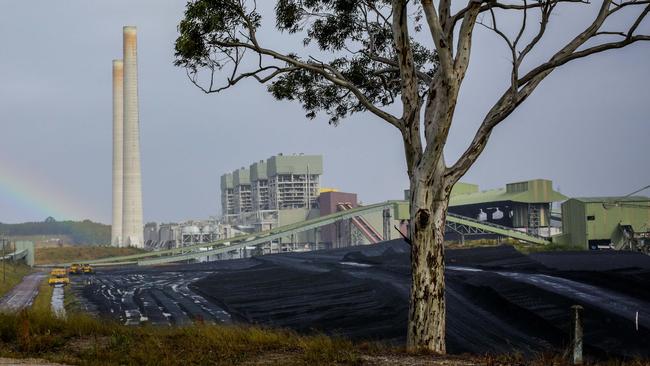What Eraring Power Station closure means for jobs, electricity prices
Experts say consumers are in the firing line with the decision to close the Eraring Power Station in just three years’ time. See what the closure will mean for NSW.
NSW
Don't miss out on the headlines from NSW. Followed categories will be added to My News.
The closure of Australia’s largest coal fired power station will cut global emissions by less than 0.04 of one per cent while putting NSW at risk of higher electricity prices, more frequent blackouts, and less secure jobs for energy sector workers in the politically vital Hunter Region.
Pointing to the record of job losses and price increases after Victoria’s Hazelwood generator shut in 2017, experts say that NSW consumers are in the firing line with the decision to close the Eraring Power Station in just three years’ time.

“IPA research has identified that close to 15 per cent of all jobs, around 10,000, in the electorate of Hunter could be destroyed by a net zero emissions target,” said the IPA’s Director of Research, Daniel Wild, who modelled the impact of the closure on global temperatures and found that it would make zero difference on global temperatures.
“Sadly with 400 jobs at stake at the plant plus thousands more potentially in the supply chain, the Eraring announcement by Origin confirms this research,” he said.
Mr Wild’s concerns were echoed by Dan Walton, who heads the Australian Workers’ Union.
“The issue is finding jobs that pay as well and are as permanent as the jobs that are slated to go when Eraring shuts down,” said Mr Walton.
“Most of the jobs in the renewables sector do not pay as well, and there just aren’t as many of them.”
“We need to get our manufacturing settings right so that workers are able to find jobs and maintain their lifestyle,” he said.


Eraring’s early closure will also lead to higher prices for consumers and lower reliability – including the possibility of what one expert called “third world”-style programs to manage consumers’ electricity usage, according to Danny Price, co-founder and director of Frontier Economics.
“The system will absolutely be less reliable and power will be more expensive once Eraring closes,” said Mr Price.
“The federal government is right to shore things up with (gas plants) at Kurri Kurri and Tallawarra, but every time you close a coal station you don’t just need a lot more firming power, but you need to rebuild the transmission grid to where the wind and solar is.”
Mr Price added that energy experts calling for “demand management” to meet the gap between needs and supply missed the point.
“We are a modern economy, not a third world country - we shouldn’t have to worry about whether we turn the power on or not,” he said, pointing to the possibility of “smart” metres that might turn customers’ airconditioning off on a hot day to cut burdens on the system.
Mr Price noted that the 2017 closure of the Victoria’s Hazelwood coal by its French owners, Engie, led to higher prices across the entire National Energy Market after its 1600 megawatts were removed from the system.
“The impact of the Hazelwood closure has been, and continues to be, significant right across the NEM. In Victoria, average spot prices for 2017 were up 85 per cent … NSW and Queensland were up 63 per cent and 53 per cent respectively,” said AER chair Paula Conboyin an analysis of the closure the following year.
With each new coal plant that is shut down, “the shock on prices and reliability will become magnified,” Mr Price said.





